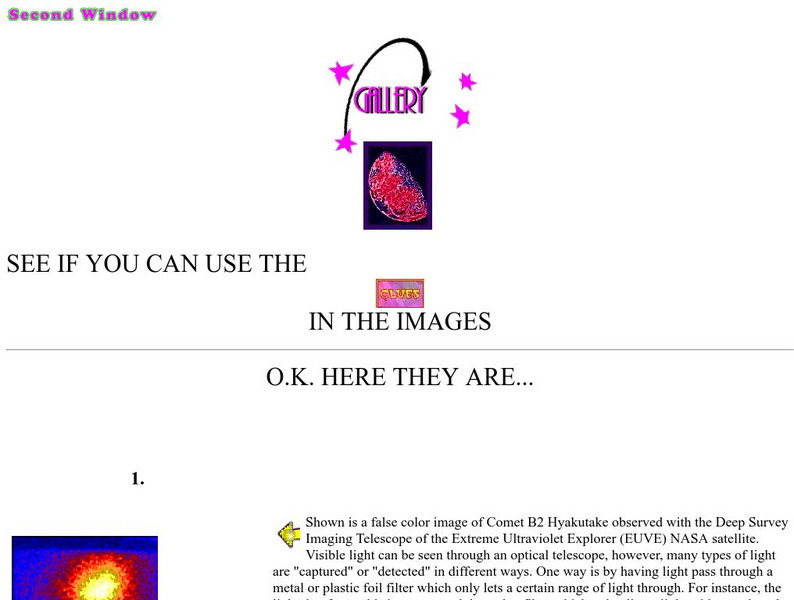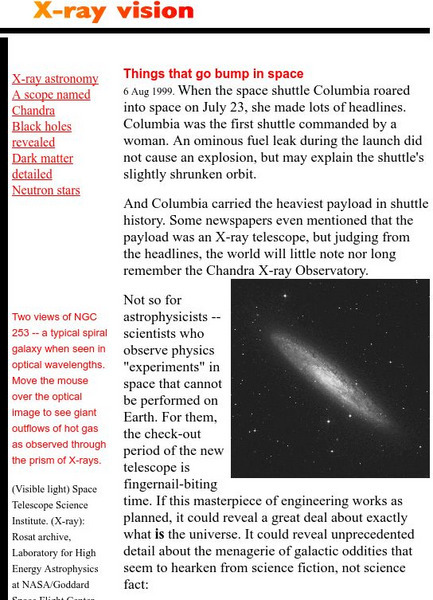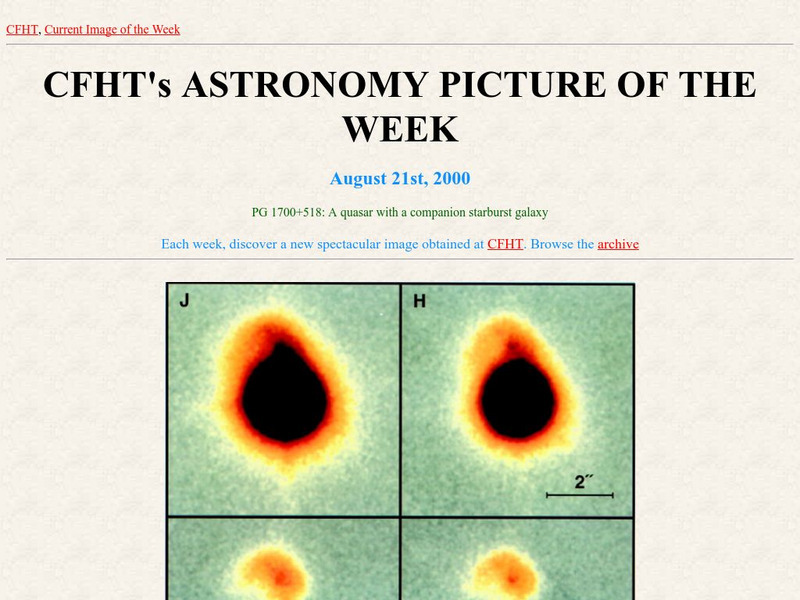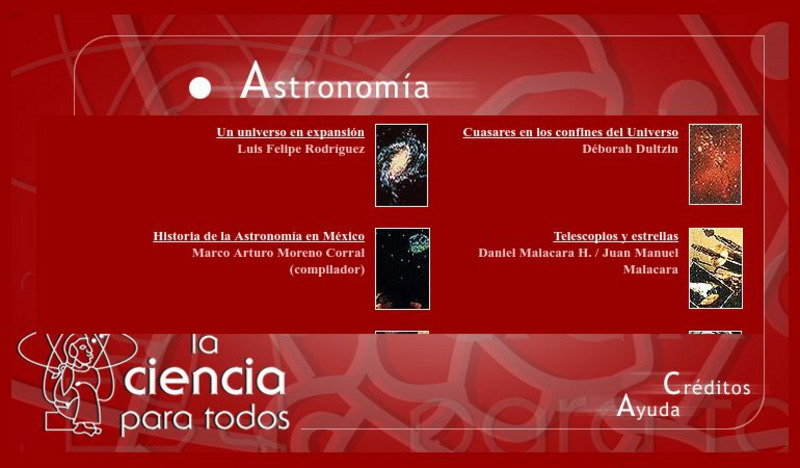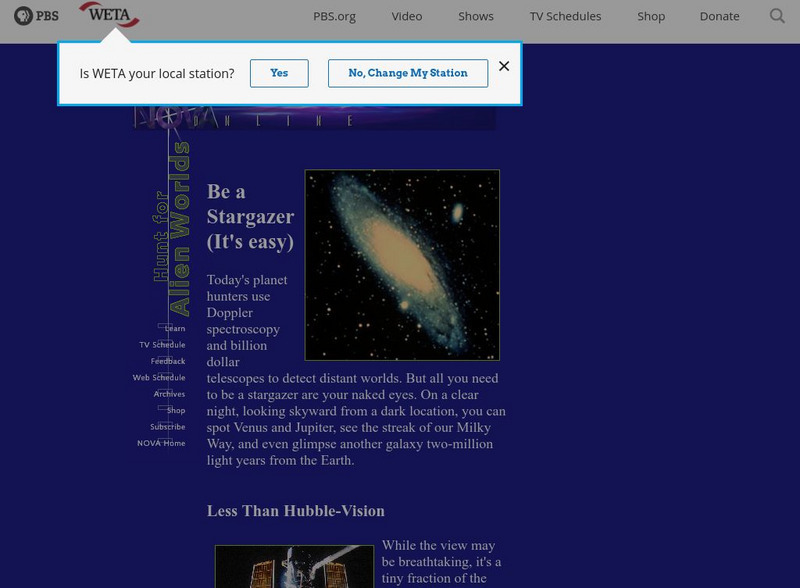NASA
Nasa: History of Venus Transit
NASA site recounts the history of the Venus Transits that have occurred over the past centuries and the various descriptions astronomers have written about them.
PBS
Pbs Learning Media: Spin a Spiral Galaxy
This interactive activity from NOVA Online lets you spin a spiral galaxy, including our own Milky Way. It demonstrates that what you can learn from visible light observations of a galaxy is largely determined by the angle from which you...
University of Illinois
University of Illinois: Stars and Constellations: White Dwarf Supernovae
Discusses the formation of the white dwarf and the role this star plays in the formation of a white dwarf supernovae.
Space Telescope Science Institute
Hubble Site: Edwin Hubble
At this site from HubbleSite provides information on how Edwin Hubble (1889?1953 CE) made some of the most important discoveries in modern astronomy. Learn about them as well as the invention of the Hubble Space Telescope. Open 'Who was...
University of Illinois
University of Illinois: Stars and Constellations: Red Giant Stars
This resource discusses advanced giants, super giants, and giant stars. Links in the information provide further information on specific terms.
University of Illinois
University of Illinois: Stars and Constellations: Planetary Nebulae
This resource contains information about planetary nebulae and their characteristics.
University of California
Center for Science Education: Gallery
A gallery of astronomy images which depict galaxies, comets, the moon, planets, nebulae, supernovae as seen in various regions of the electromagnetic spectrum. Each image in the gallery is described. Fascinating!
NumberNut
Number Nut: Calendar Origins
History and mathematics merge in this lesson that explores the origin of the calendar. Learn how it all got started in this detailed lesson that includes a simple months of the year game and a more challenging time conversion game. Both...
University of Wisconsin
The Why Files: Things That Go Bump in Space
Contains an introduction to x-ray astronomy, describing how x-rays are being used by scientists to learn about the universe. Also contains links to sites describing black holes, dark matter, neutron stars, and how they are investigated...
University of Wisconsin
The Why Files: Infra Red Eye Special
A description of the ways in which infra-red is used in astronomy, including an extended example describing how infra-red was used to learn about Pluto's moon, Charon. There are also links to other sites of astronomical interest.
Ministerio de Educación (Spain)
Ntic: Astronomia Visible
In this site you can learn about stars, planets, satellites and a little history of Astronomy.
University of Hawai'i
University of Hawaii Cfht: Quasars
Provides basic information related to quasars.
Wikimedia
Wikipedia: Timeline of Solar System Astronomy
This site from the encyclopedia Wikipedia provides an in-depth timeline of important events in astronomy relating to the solar system are presented here. Links are also provided for additional information on related subjects.
Instituto Latinoamericano de la Comunicacion Educativa
La Ciencia Para Todos: Astronomia
In this site you will find several Astronomy topics such as: the expansion of the Universe, history of Astronomy in Mexico, quasars in the confine of the Universe and telescopes and stars.Read phonetically
PBS
Pbs: Discovery of Quasars 1960
PBS offers a brief history of the discovery of quasars and the people involved.
California Institute of Technology
Cal Tech: Two Micron All Sky Survey
Learn about the Two Micron All Sky Survey project, in which telescopes and observatories scan the sky for infrared radiation in order to learn more about the Milky Way galaxy. The infrared spectrum is described and its importance to...
PBS
Pbs: Nova Online: Be a Stargazer
This resource briefly describes how telescopes work and provides helpful tips for stargazing.
PBS
Star Map
This star map has five different constellations along with four newly discovered solar systems. If you are located in the northern hemisphere you can use this resource to locate stars.
Trinity College Dublin
The History of Mathematics: Roemer
A short biographical sketch of the life and work of Ole Roemer (1652-1719 CE). Identifies his scientific discoveries and contributions in astronomy.
Christian Science Monitor
Christian Science Monitor: The Map of the Millennium
This article from the Christian Science Monitor explores the impact of key astronomical discoveries of the past millennium on science and religion.
Other
Astrolabe.org: The Astrolabe
A description of the ancient astrolabes and how they worked. Provides information about definitions, collections, and also includes photos.
Other
Sky Server: Galaxies
SkyServer explains and presents images of spiral galaxies, elliptical galaxies, irregular galaxies, galaxy clusters, galaxy collisions and the like.
Other
The Ptolemaic Model of the Planetary System
An easy-to-read description and history of Ptolemy's geocentric model of the universe. Geocentric means that Ptolemy believed the Earth was the center of the universe.
Other
The Astrolabe: Home Page
This site provides a very general overview of astrolabe principles with links to other pages for more detailed information.






